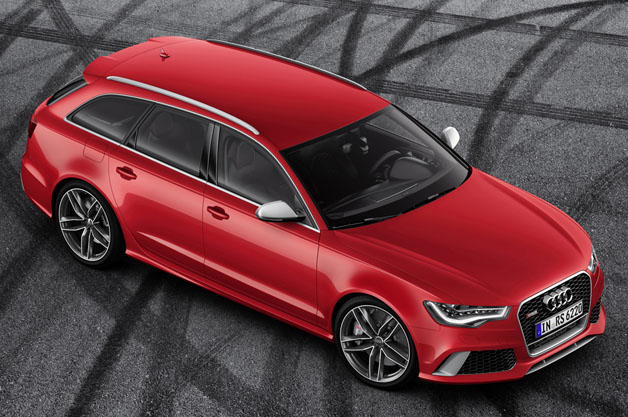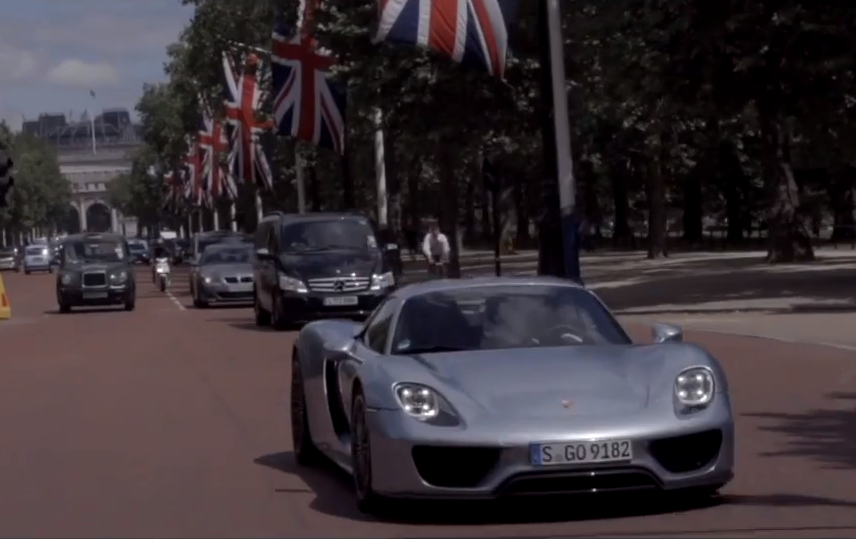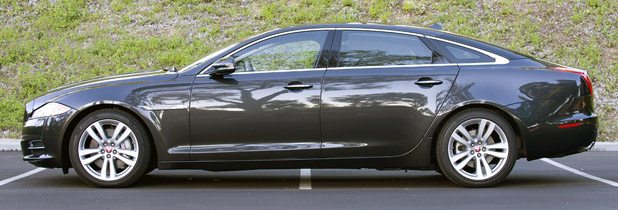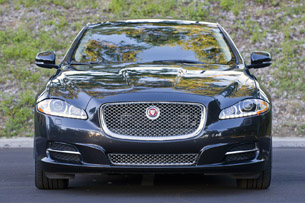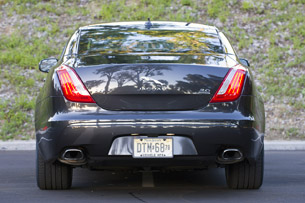A bit of British nobility floods the senses when piloting the 2014
Jaguar XJ. It's an emotional
rush, a perception based on physical surroundings that influence the mind in
much the same manner that a stein of pilsner tastes best when consumed in a
German beer garden and no sand is softer than that found on a warm Caribbean
beach.
Jaguar has been
assembling cars for nearly 100 years, and few automakers are as equally adept
at capturing aristocracy and timelessness within the rich cabins of their
luxury offerings.
Jaguar would have no concern if it were the only game in town, but that's far
from the truth. The premium full-size luxury segment, which includes vehicles
hovering just under or at the six-figure mark, is a contentious grouping that
includes the
Audi A8,
BMW 7 Series,
Lexus LS,
Mercedes-Benz S-Class and
Porsche Panamera. Each of
those brings its own game to the battle, and none are easy to dismiss.
To better understand the British perspective and evaluate its latest offering
on a land without royalty, I recently spent a week with a long-wheelbase,
all-wheel-drive Jaguar XJ in Southern California.
The secret is aluminum. The result is a very rigid platform
that is strong, corrosion-resistant and extremely lightweight.
At first glance, this sedan appears to be everything but the
enthusiast's choice. It is the automaker's largest platform, fitted with one of
its least powerful engines mated to an all-wheel drive powertrain. Mass is
always the enemy, and a big car paired with a small engine and a complex
driveline is often sluggish on the road. Yet the Jaguar XJL AWD 3.0 dodges the
bullet with a curb weight of just 4,151 pounds – tipping the scales 313 pounds
lighter than the Audi A8L, 374 pounds lighter than the BMW 740Li xDrive and a
massive 622 pounds lighter than the Mercedes S550 4Matic, for quick comparison.
The secret is aluminum, the lightweight alloy that Jaguar embraced when it
launched its all-new flagship in 2011. Unlike its predecessors, the
fourth-generation model boasted an aluminum chassis built in much the same
manner of a jet aircraft. Instead of using an alloy frame covered in lightweight
panels like the Audi A8, Jaguar chose to assemble cast and extruded aluminum
structural members, and then cover them with bonded and riveted aluminum sheet.
The result is a very rigid platform that is strong, corrosion-resistant and
extremely lightweight.
Like most premium automakers, Jaguar offers its XJ with a choice of wheelbase,
engine and powertrain. While its base price starts at $85,595 (including $895
destination), this Stratus Grey over Jet tester arrived under 3.0-liter V6
power wearing a few options that rocketed its price skyward. The most
significant is the Premium Rear Seat package ($7,750), which pampers those in
the second row with reclining and massaging rear seats, video entertainment and
leather-wrapped tables. The Meridian audio upgrade ($4,180) packs 1,300 watts
through 26 speakers and the Illumination package ($1,700) brightens up the
doors, trunk sills and air vents. Lastly, an Electric Rear Window Sunblind
($670) blocks prying eyes and the sun's rays. Add it up, and it will cost you
$100,745 to put an identical car in your driveway.
Whether or not the Jaguar's sleek exterior styling pleases,
the lofty sticker price is quickly justified after dropping into the cabin.
Whether or not the Jaguar's sleek exterior styling pleases
(its distinctive blackened C-pillar penned by Ian Callum is best masked by
darker palettes), the lofty sticker price is quickly justified after dropping
into the cabin. Unlike the German, Japanese and Korean offerings, which envelop
their followers with technology and advanced styling, the Brit relies on
traditional luxury to pamper passengers. Occupants sit within a completely
leather-lined cockpit with a bold sweeping dash highlighted with glossy
finished wood. The four polished chrome climate-control vents are featured
prominently, and nearly all of the switchgear is trimmed in the bright
traditional metal. Natural hides covering nearly everything are rich to the
eyes, the nose and the fingertips – it's sensory overload.
The driving position is good, with most of the controls in their proper
ergonomic position. The only oddity, which has now become familiar across its
family, is the JaguarDrive Select transmission dial that rises eerily out of
the console when the vehicle is powered up (park in the hot sun, and its metal
dial becomes almost too hot to touch). The primary instrument panel is a
12.3-inch high-definition "Virtual Instruments" gauge cluster, which
despite its 614,400-pixel resolution, looked much more impressive four years
ago than it does today against modern high-res screens. Regardless, it is easy
to read without being too gimmicky.
The standard XJ is hardly cramped, but the long-wheelbase model offers a
generous 44.1 inches of rear seat legroom – that's 5.1 inches more than its
sibling – thanks to its nearly 5-inch wheelbase stretch. Passengers in the
other three remaining positions (drop the Premium Rear Seat package to gain
room for a fifth passenger) will find the accommodations very inviting, with
those in the second row scoring the real First Class upgrade with mirrored
creature comforts including full HVAC controls, massaging seats, flat-screen
entertainment, footrests, vanity mirrors, privacy shades and a moonroof. New
for 2015 is the leather-wrapped tray table, which replaces last year's polished
wood version. Even if you're not riding with a chauffeur, it can reveal itself
as a convenient addition - before a morning meeting, I climbed into the back
seat and drew the privacy blinds before typing on my laptop for an hour.
LWB models have been enhanced with improved rear seat
massage, power-operated sun blinds, rear-seat entertainment, chauffeur controls
and new audio options.
Jaguar has treated its XJ to a mild update for 2014, which
included new standard soft-close doors, upgraded upholstery, new trim colors
and revised wheel choices. Long-wheelbase models have been enhanced the most,
with improved rear seat massage, power-operated sun blinds, rear-seat
entertainment, chauffeur controls and new audio options. But the big headlines
have been reserved for the powertrain, as the entry-level naturally aspirated
5.0-liter V8 – a Jaguar staple since the late 1990s – had been replaced by a
supercharged V6.
Under the hood of the XJ, with nearly all of its mass aft of the front axle, is
an all-aluminum supercharged 3.0-liter V6 rated at 340 horsepower and 332
pound-feet of torque. Power is sent through a standard eight-speed automatic transmission,
sourced from ZF. All-wheel drive models like this one have a multi-plate clutch
at the back of the gearbox that controls the amount of power sent to the front
differential. Under most conditions, the majority of the torque goes to the
rear wheels – emulating a rear-wheel-drive chassis – for traditional driving
dynamics. However, up to 50 percent of that torque may be sent to the front
axle if slip is detected. The AWD system is completely automatic, but a Winter
Mode defaults to a 30:70 torque split to improve traction on slippery surfaces.
A quick stab of the start/stop button brings the Jaguar to life, and it settles
to a nearly imperceptible idle. The JaguarDrive Select to rises into place, and
gear selection is just a clockwise spin of the dial away. The XJ is no sport
sedan, but its subtle exhaust note is wonderful and very pleasing while
underway. The soundtrack permeates the cabin as a deep and gentle purr from the
trunk – the noise is genuine (from tuned mufflers) and very tastefully executed.
Under full throttle it is more forceful, with a mechanical accompaniment from
under the hood joining in.
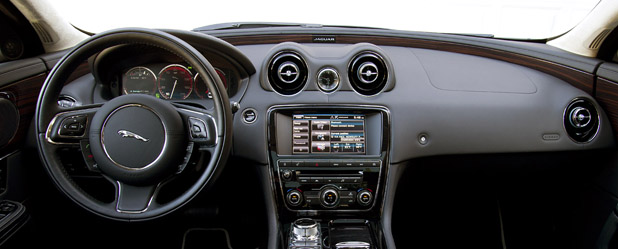
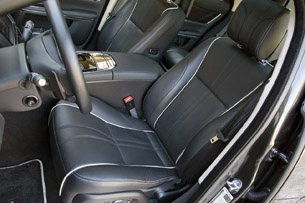
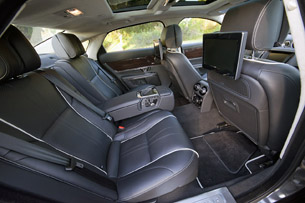
Jaguar quotes a 0-60 time of 6.1 seconds, which is the
slowest in the model range, but the sedan never feels lethargic.
Being the heaviest and least powerful in the XJ lineup does
have consequences in terms of overall acceleration – Jaguar quotes a 0-60 time
of 6.1 seconds, which is the slowest in the model range – but the sedan never
feels lethargic or burdened underway. The standard start/stop system is a bit
clumsy (a button defeats it), but off-the-line acceleration is peppy and
merging with traffic is never an issue. It helps that wheel spin is kept in
check by the intelligent AWD system, which preloads the front tires when heavy
throttle is applied.
Allowing the operator to configure the vehicle to its mission, Jaguar offers
Normal, Dynamic and Winter driving modes. Switching between the three alters
transmission shift points, engine response, Adaptive Dynamics active suspension
and stability control intervention. Normal mode is good under nearly all
driving conditions, with Dynamic only needed when the driver wants to
aggressively tackle some big sweepers. But even in the sportiest of the modes,
when the digital instrument cluster changes its illumination to a red tone and
its gym shoes are put to the test (a nice set of Pirelli P Zero Nero tires, 245/45R19
front and 275/40R19 rear), the XJ never feels particularly at ease in the tight
canyons – that isn't its mission.
The XJL is a very long sedan with an impressive wheelbase. While this
translates to a comfortable ride, its dynamic characteristics never cease to
remind the driver of each and every one of its 206.8 inches of length. Outward
visibility is challenging, especially to the rear, and the turning radius is a
large 41.7 feet (that equates to a three-point turn in many cases). Yet pilot
it down the highway and it glides effortlessly, seemingly forever. Jaguar fits
the XJL with a sizeable 21.7-gallon fuel tank, and that translates to a
sphincter-squeezing range of about 500 miles based on the EPA-calculated
highway economy of 24 miles per gallon.
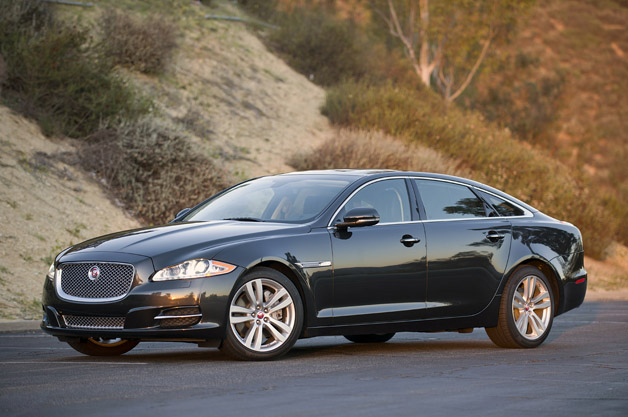
The Brit's build quality is impressive, and the supercharged
V6 is the perfect mate to both its transmission and the lightweight chassis.
If asked to choose the Jaguar's best attributes, I'd point
to its handsome styling and elegant interior appointments which warmly invite
passengers to settle in, get comfortable and enjoy the travel (most of the
competitors offer cooler and more sterile accommodations). The Brit's build
quality is also impressive, and the supercharged V6 is the perfect mate to both
its transmission and the lightweight alloy chassis.
If asked to choose the Jaguar's worst attributes, the climate control system
would be at the top of my list. Southern California was experiencing a heatwave
during my test, and the vehicle couldn't muster a properly frigid blow on its
Auto setting (I had to manually bump up the fan speed constantly). I also found
the trunk to be on the small side (lacking fold-down rear seats or a
pass-through to improve capacity) and the navigation system seemed to be more
interesting in a circuitous tour than a beeline to my programmed destination
(in frustration, I relied on my smart phone for directions).
Image Credit: Copyright 2014 Michael Harley / AOL
Autoblog
by Michael Harley
http://www.boscheuropean.com
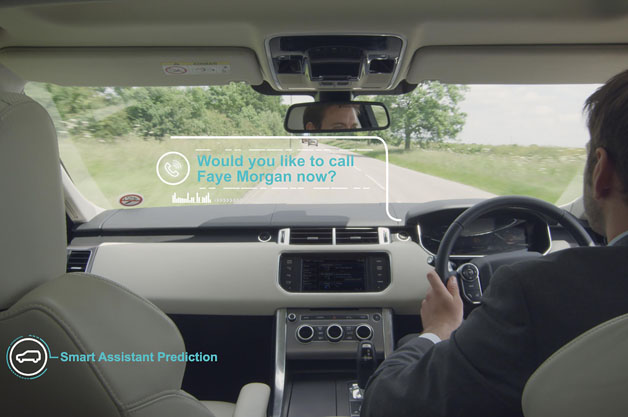
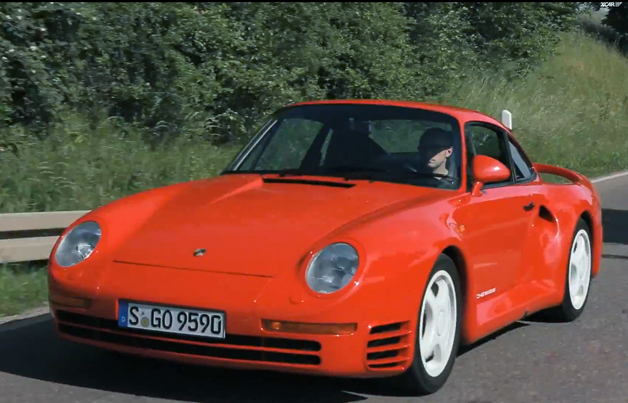
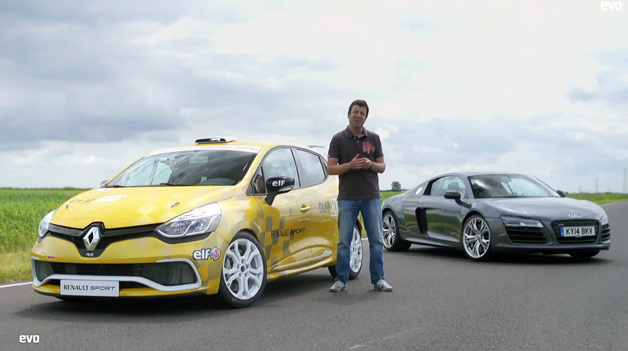
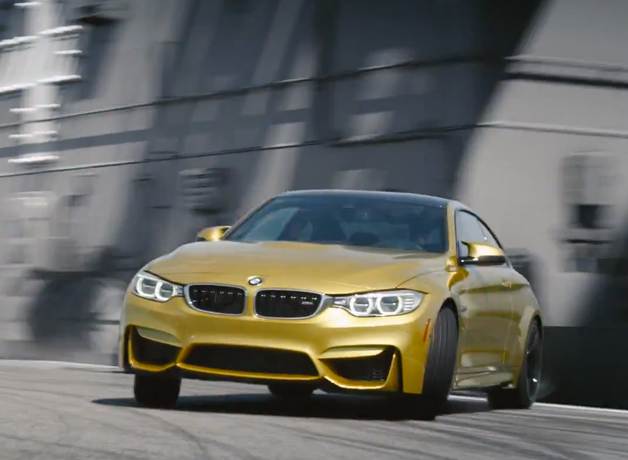
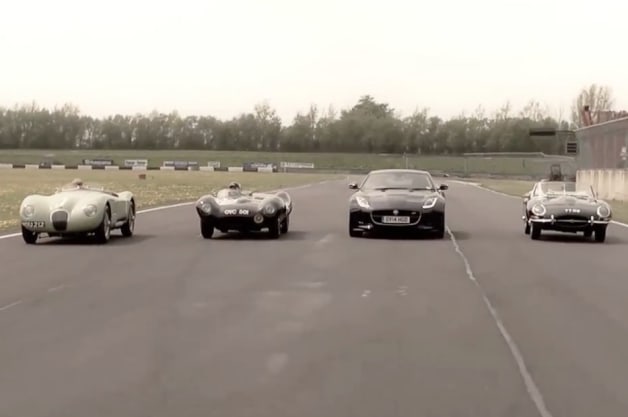


.JPG)

.JPG)
